Gallery Network
Dealer Dorian Bergen, an Early Advocate of Faith Ringgold’s Work, on Why Prints Are Key to Understanding Her Layered Practice
"Faith Ringgold: Prints and Multiples" is currently on view at New York's ACA Galleries.
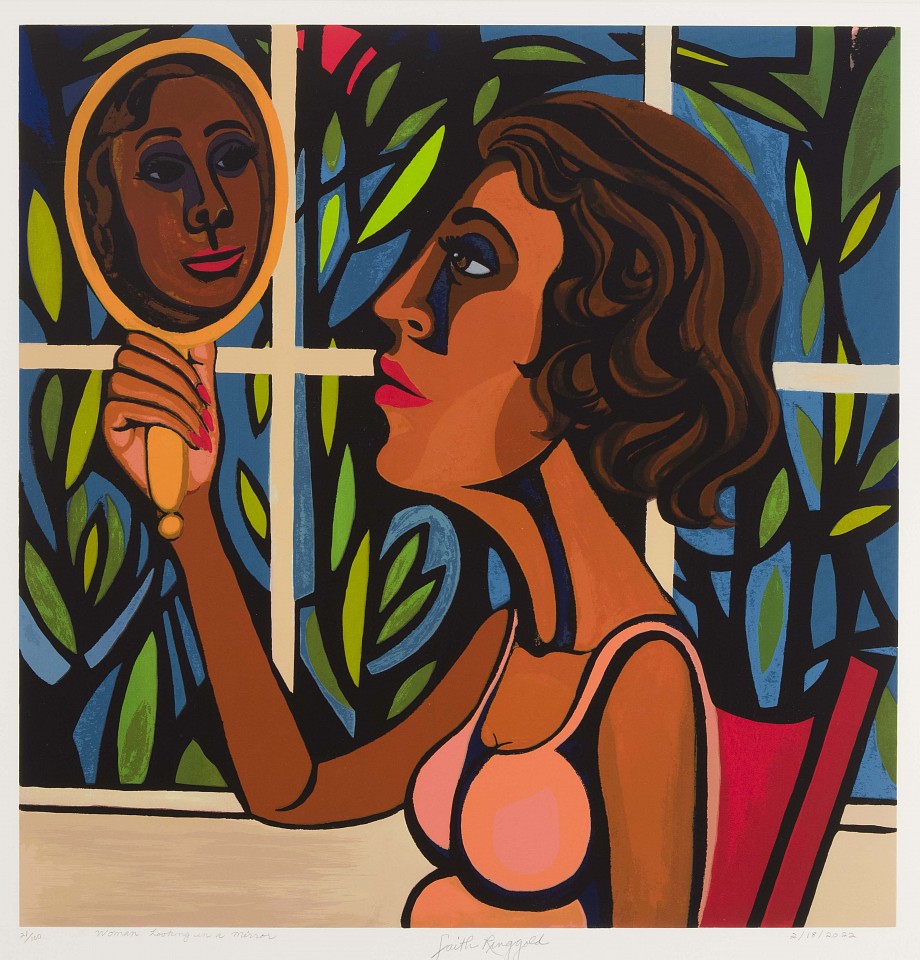
"Faith Ringgold: Prints and Multiples" is currently on view at New York's ACA Galleries.

Artnet Gallery Network

New York’s American Contemporary Art Galleries (ACA Galleries) has a long legacy in the history of American art. Founded in 1932 by Herman Baron, with artists Stuart Davis and Yasuo Kuniyoshi, over nearly 100 years, the gallery has championed pivotal voices in American art, including Aaron Douglas, Alice Neel, Barnett Newman, and Charles White. ACA Galleries has also played a unique role in heralding the works of innovative artists who fall outside the mainstream. Such was the case with Faith Ringgold, who, as a Black American woman who engaged with textiles, was often written out of conversations.
Today, Ringgold is the subject of a long-overdue museum retrospective, “Faith Ringgold: American People,” which brings together over 50 years of work (the exhibition debuted at New York’s New Museum earlier this year and will open at San Francisco’s De Young Museum in July). For many years, however, Ringgold worked with little recognition.
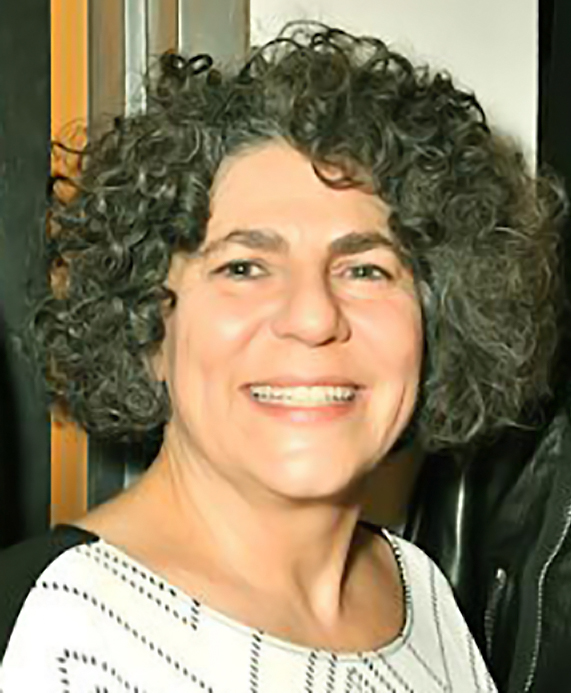
Dorian Bergen, president of ACA Galleries.
Dorian Bergen, the president of ACA Galleries, first met Ringgold in the mid-1990s and has been advocating for the artist’s rightful place in the art world since. Bergen and ACA worked with curators at the New Museum on the traveling exhibition, and lent a number of works.
Currently, the gallery is hosting “Faith Ringgold: Prints and Multiples,” a show that looks closely at the artist and writer’s relationship with these mediums. On the occasion of the exhibition, we spoke to Bergen about how the artist’s market has transformed over the past 30 years and why prints are so important to understanding Ringgold’s body of work.
How did you first become acquainted with Faith Ringgold and her works?
In 1995 we were introduced to Ringgold’s work by Linda Freeman, who was producing a documentary. Faith’s autobiography We Flew Over the Bridge was released that year, and to our delight she mentioned her admiration for ACA Galleries in the book, noting that the gallery was one of the few places in the 1950s and later where she could view artwork by Black artists—Benny Andrews, Romare Bearden, Elizabeth Catlett, and Jacob Lawrence, among others. ACA was one of the only galleries that regularly showed artwork by women and other underrepresented artists for many years. From the first moment we visited Faith’s studio, we both knew it was serendipity.
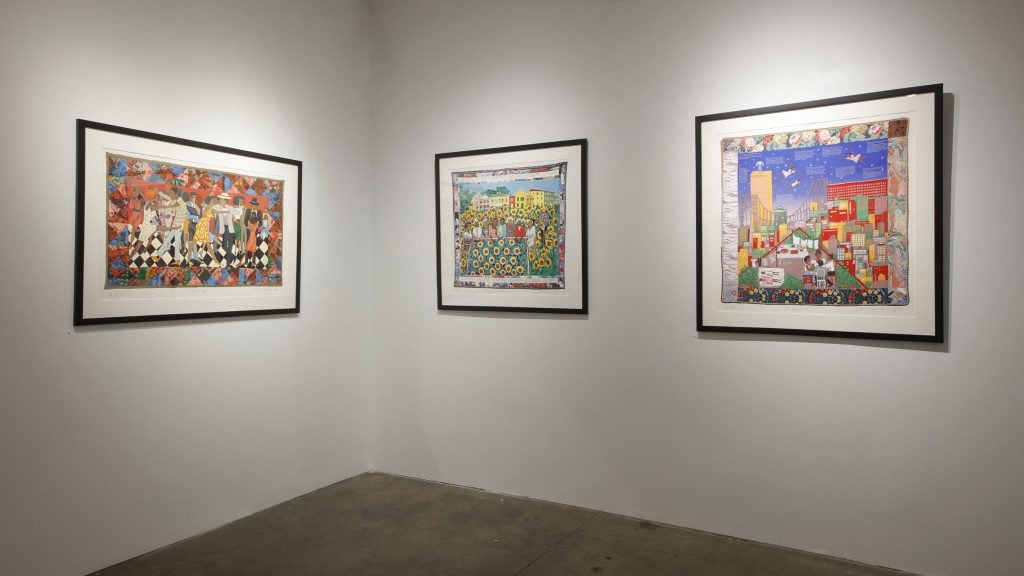
Installation view, “Faith Ringgold: Prints and Multiples,” 2022. Courtesy of ACA Galleries.
Do any notable exhibitions over the years come to mind?
After Faith’s first exhibition at ACA in 1995, we organized a traveling survey. It toured to more than 50 institutions nationally. The show was hosted by mid-size museums and university galleries across America, allowing millions of people to see her work. Faith always said if opportunity knocks, open the door!
How has appreciation of Ringgold’s work transformed over the years? What were the difficulties in having her work accepted and why?
Since the 1970s, Faith has had institutional support, yet early on her work was not always accepted or appreciated by the public because of its overt political messaging. She often went against the grain, knowing that she spoke the truth and that people would ultimately catch up.
We worked very hard to get her work out there and took advantage of every opportunity presented. She was a professor of art at the University of Southern California in San Diego until the mid-1990s, when she retired to paint full-time. Around this time ACA began developing a contemporary program to build on its historic roots. The gallery’s history and Faith’s trajectory have parallel histories: When Faith was born, ACA was organizing political exhibitions. When Faith was creating her mature work, ACA was blacklisted under McCarthyism. We both embraced art that challenged mainstream political and social ideologies. It was the perfect partnership.
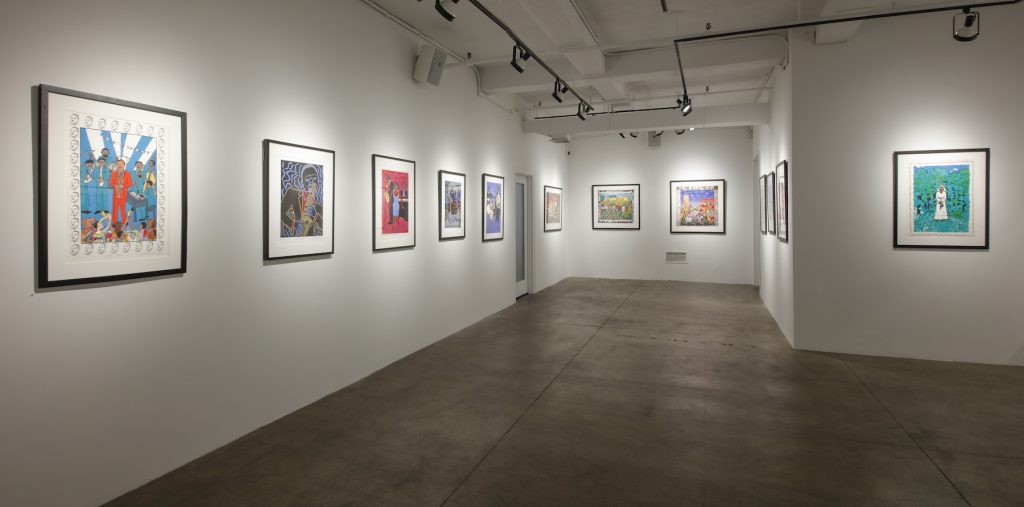
Installation view, “Faith Ringgold: Prints and Multiples,” 2022. Courtesy of ACA Galleries.
The gallery’s current exhibition coincides with a pivotal museum show of her work. Why did you decide to focus on prints and multiples for your presentation? What is the artist’s relationship to these mediums, and why are her prints essential to understanding her practice?
Our current exhibition, “Faith Ringgold: Prints and Multiples,” explores Faith’s career-spanning interest in prints and editions. In her series over the decades, Faith has strived to make art that is available to the people. Prints and multiples allow for a wider dissemination of her work.
The show begins with political posters from the 1970s, which she made for distribution at protests and political rallies. They were a vehicle for Faith to get her messages out to the world, while at the same time subverting the narrow access to art. These posters reflect a larger movement at the time for artists making politically engaged work to challenge long-held notions of what we consider art and who has access to it— ideas young artists today are still battling. Ringgold’s political posters also reflect her deep roots in protest culture and her desire for art to be a catalyst for cultural change. The exhibition at ACA includes work from every major series Ringgold completed over the past decades, including series exploring the complexities of identity politics. Our show complements Faith’s retrospective while offering a different perspective on her lifelong practice.
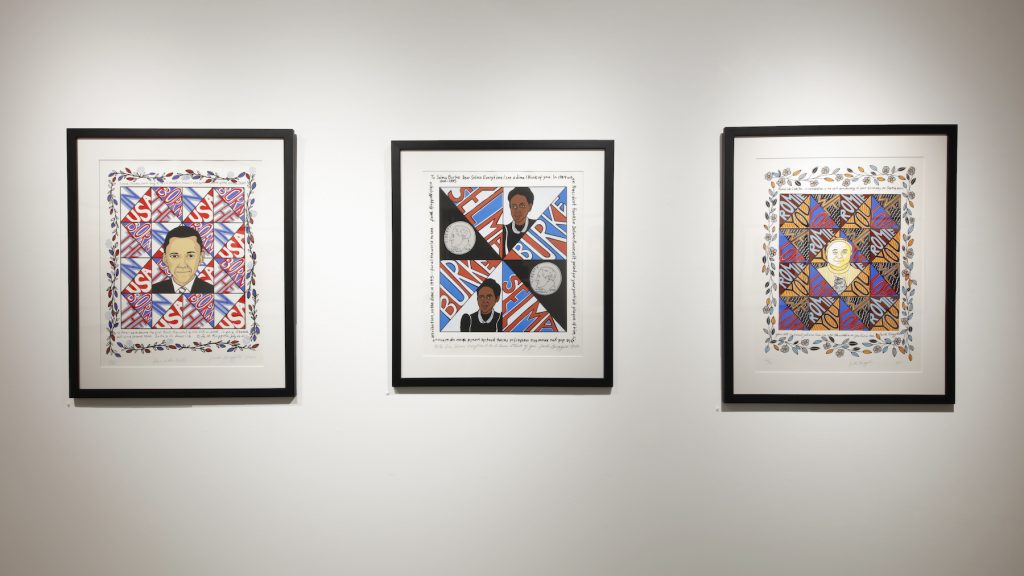
Installation view, “Faith Ringgold: Prints and Multiples,” 2022. Courtesy of ACA Galleries.
What are some of the highlights of your exhibition?
One of the works that people often respond to is Tar Beach #2 (1990–92). The work on view is part of a silkscreen on silk print series made after the original Tar Beach (1988), which is in the permanent collection of the Solomon R. Guggenheim Museum and featured in Faith’s retrospective. Viewers often immediately recognize the imagery from the book Tar Beach, having grown up reading it as children and now sharing it with their own. Others who are seeing it for the first time can’t help but respond to its splendor.
When Faith was a little girl living in Harlem, she and her family would often go up to the roof of their apartment building on hot summer nights to stargaze. They would call the roof of their apartment “tar beach.” Although Tar Beach #2 reflects this very intimate and specific life experience, we can all relate to its themes of childhood, wonder, culture, and family. Works such as these that are perhaps less overtly political are just as important to Ringgold’s oeuvre, offering glimpses into her life experiences and those of her community.
The exhibition debuts two new editions: Women Dancing on the George Washington Bridge, a silkscreen on silk with a unique hand-quilted border, and Woman Looking in a Mirror, a silkscreen edition based on the 1966 painting of the same title. Can you tell me about each of these works and why they’re a good collecting opportunity?
The George Washington Bridge often appears in her work, serving as a vehicle for her to insert African American women into whitewashed American iconography.
As a child, Faith would marvel at the grandeur of the bridge; she would imagine herself floating above it wearing its lights as a necklace. Women Dancing on the George Washington Bridge celebrates Faith’s connection to New York while empowering her community in a joyful manner.
Woman Looking in a Mirror similarly explores Black female subjectivity. In this work, Ringgold turns the gaze of the Black woman, often objectified in Western art, in on herself. This seminal work expresses Faith’s struggle to claim a place for herself within the white supremacist and misogynistic history of art.
These incredibly powerful works combat our country’s history of racial discrimination while looking toward a more inclusive future. Not only are they wonderful artworks to live with and contemplate, but they are also increasingly recognized as important contributions to the history and future of art in America.
“Faith Ringgold: Prints and Multiples” is on view through Friday, June 17, 2022, at ACA Galleries, 529 West 20th Street, New York, NY 10011.
